
GUEST BLOGGER NELL CROSS BECKERMAN
Insiration for urban nature poems
Being in nature connects us to our base of humanity and interconnectedness to life on Earth, and provides natural inspiration. DOWN UNDER THE PIER (Cameron Kids/illustrated by Rachell Sumpter) entices children with the excitement of the carnival on the pier, then invites them into the magical world under the pier—when low tide reveals the sea stars and mussels of the intertidal zone. My goal as an author is to capture how it FEELS to discover nature.
In this lesson, students will step away from their desks, experiment with different art mediums, and learn just for learning’s sake. Students will cultivate a sense of gratitude for their surroundings and develop a curious creative mindset.
Preparation: Gather materials
- Art supplies – Have students select their own art supplies. Ideas include:
- Watercolors
- colored pencils
- crayons
- markers
- paint pens
- pastels
- Paper – A sheet of blank paper and a sheet of lined paper. Or you can use my free downloadable templates.
- A clipboard or another hard surface so students can be mobile, even if you plan to stay inside.
- Pencil or colored pencils for writin
A literature connection to nature
- Read Down Under the Pier.
- Ask your students what it feels like when the character are under the pier, when the kids are discovering and exploring nature.
- Guide students through observations of the artist’s color choices. What colors feel realistic and where did the artist get creative?
- Point out the structure of the stanzas on the pages. Most have four lines of description, then a last line with a more sensory/big idea feeling.
Observe a nature item: A science skill
Scientists look closely at nature to observe it. Artists and writers look closely at nature to be inspired by it. They notice all the details so they can learn and appreciate the beauty. Looking closely with a curious mind is having both a scientific mind and a creative mind.
Have students go outside, on a porch, or look out a window, and find something in nature. Examples include:
- cloud
- tree
- rock
- seed pod
- ant
- flower
- giant boulder
- bush
- mountain
Using color
To help students leave their analytical left brain and enter their creative right brain, let them know there is no pressure to draw their object realistically. Instead, students can observe the colors and textures of their object, making stripes of colors on their page inspired by their object. It doesn’t have to exactly match.
In my example (right), I looked out my window and saw a palm tree. It was a dark, cloudy day and the palm tree’s colors are muted. I chose to use brighter colors, and drew stripes, lines, and shapes inspired by the trunk and pointy leaves. I used watercolor and colored pencils.
Painting with words to create a poem
When I write, I try to use fun and unusual words to make the writing more fun to read. Students can use this list or a thesaurus to “paint” with words, making the most creative picture they can.
Ask your students to think of an opposite pair they can use to describe their nature item. It could be outside/inside (for a seed pod). For a leaf, maybe it could be top/bottom.
Your poems will follow the following structure:
- First line: Up/On/Over/Outside ______________.
- Second line: Down/Below/Under/Inside _______________.
- Third line: A personal sensation. (Ask students to think about they connect to this object. Adding their own experience of nature will make this poem personal. What does this object remind students of?)
My example:
On top of the palm tree…
pointy leaves explode.
At the bottom of the palm tree…
a mile-long trunk creaks while it sways
I close my eyes and dream of adventure.
Nell Cross Beckerman
After students complete their poems, ask them to copy their poems on the back of an index card or other small piece of paper and glue it to their art (see my sample on the right).
Bonus: Creative free write
Now that your students have written a poem inspired by nature, they can use the last line of their poem as the story spark for a creative fiction story. It can either provide overall inspiration or it can be the first line. Set a timer for two minutes and just write!
I hope your class enjoys this Urban Nature Poem Art lesson!
Nell is offering limited free virtual classroom visits on June 4 to read her book and answer student questions. Click to sign-up.
Nell Cross Beckerman is a former TV documentary writer/producer/director and author of DOWN UNDER THE PIER (Cameron Kids/illustrated by Rachell Sumpter), WHEN THE SKY GLOWS (Beach Lane Books 2022/illustrated by David Litchfield), and CAVES (Scholastic 2022/illustrated by Kalen Chock.)
Catch up with Nell on Twitter, Instagram, or her website.


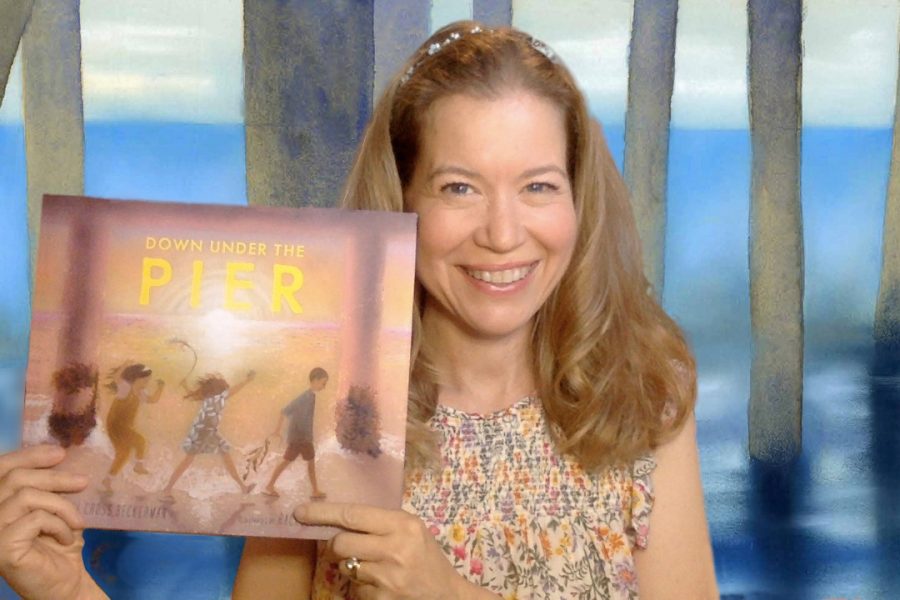
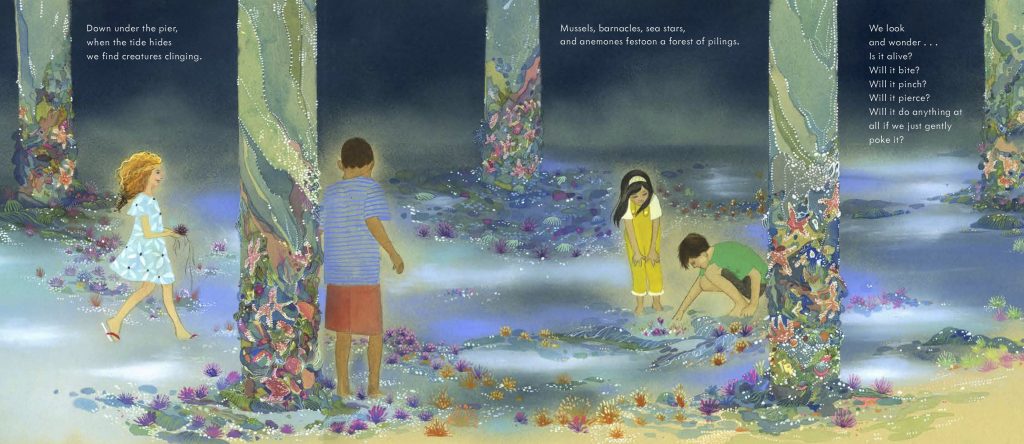

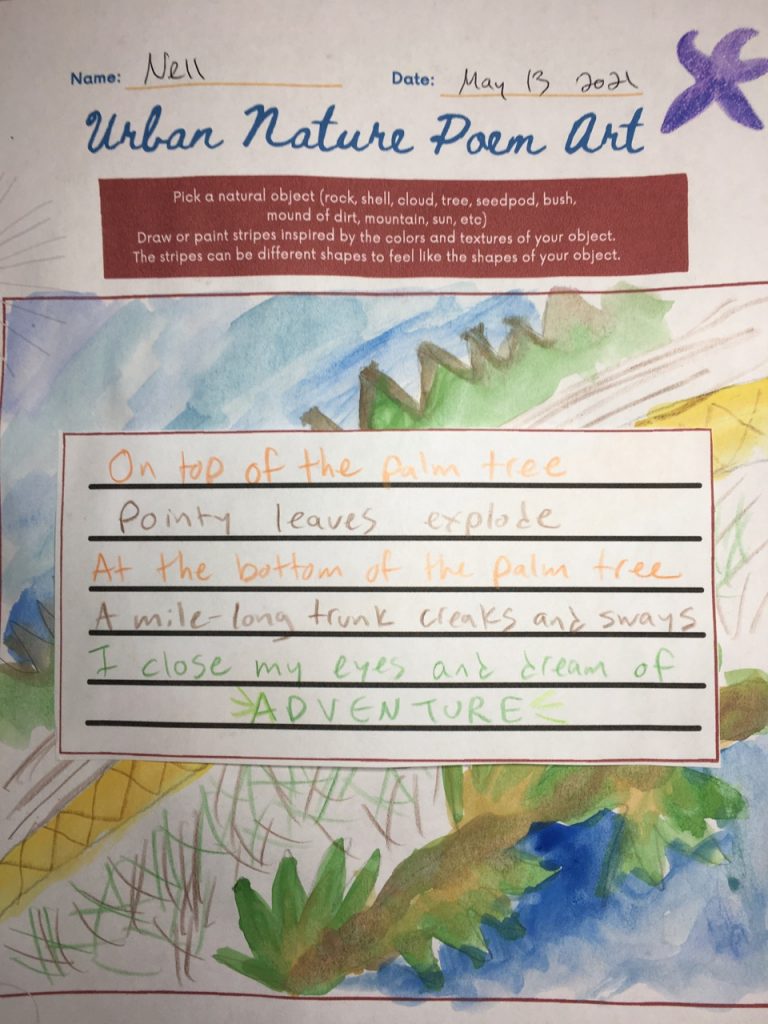
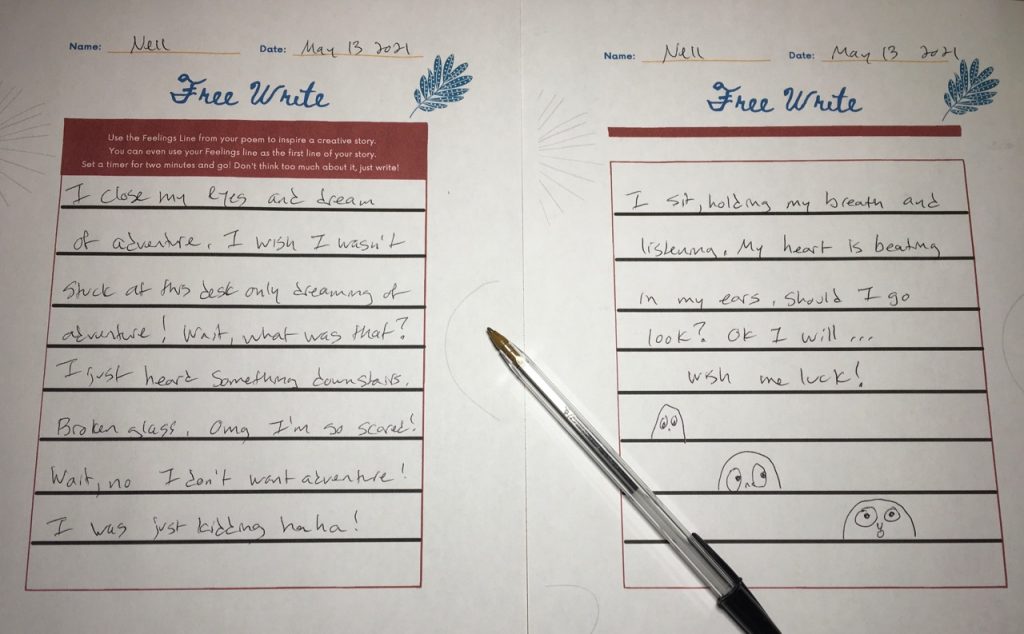
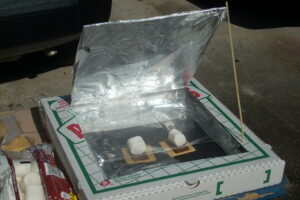

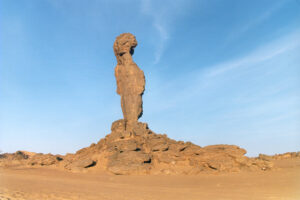


Leave a Reply
Your email is safe with me.